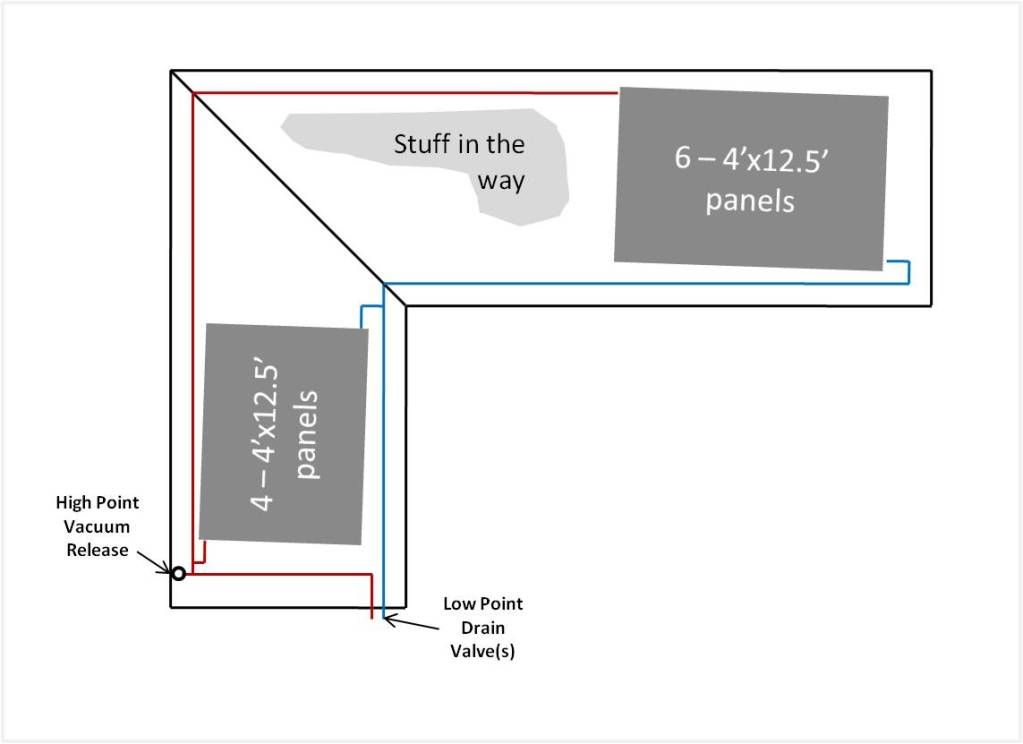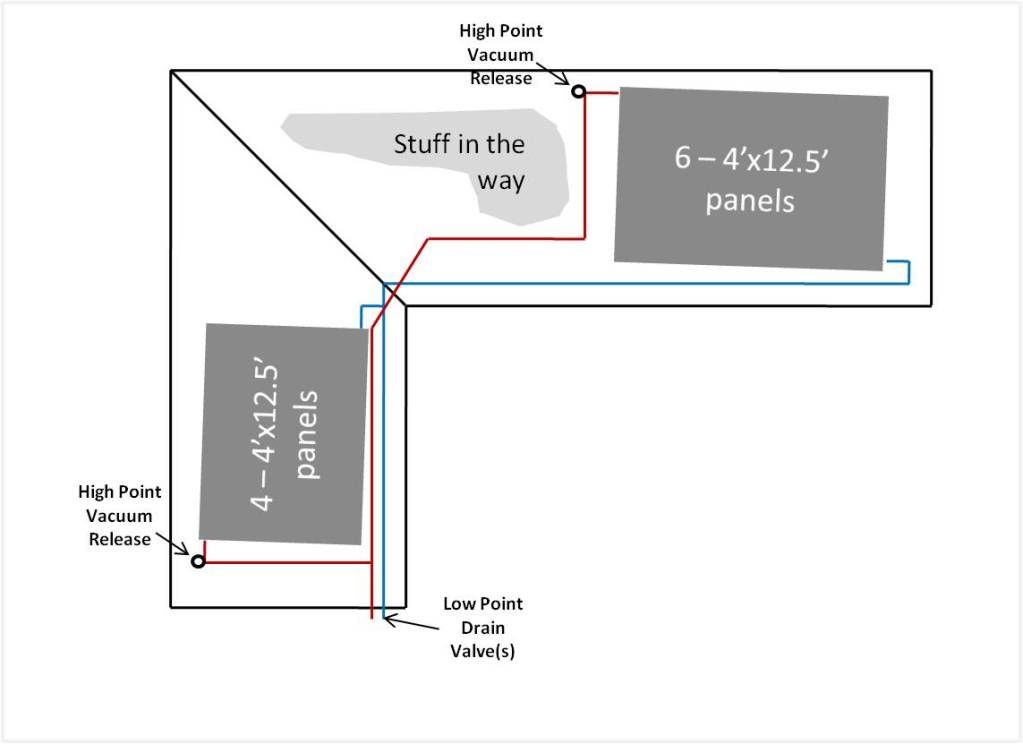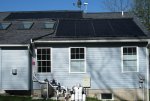OK, my turn to ask for advice again. Got my new motor and re-plumbed equipment pad squared away. Now that the nights have cooled and the water is only around 80 degrees, time to get this solar system installed. Here are 2 possibilities:
Option 1:

Option 2:

I had been planning on Option 1 and only currently have a single vacuum breaker, but looking on the roof again, that would require about 20 more feet of pipe than Option 2 and routing the pipe around the "stuff" at the top might be difficult (and really there is not as much roof above and below the panels as shown). I think I should be able to get the hot pipe to go over the cold pipe in the corner of Option 2 and still maintain enough pipe slope.
Questions:
1. While the 6 panels should have less resistance than the 4 panels, will the MUCH longer run of pipe possibly make things unbalanced in Option 1?
2. Any issues with using the 2 vacuum breakers in Option 2? Besides the added expense and twice as many to go bad / leak?
3. Would the Low Point Drain(s) (rarely needed) be better at the entrance to the panels? Or should I even bother with them since I have the vacuum releases and an actual solar 3-way valve at the pad to allow draining?
4. With the 3-way at the pad and check valve on the hot water return, it there a point to putting ball valves on the risers to the roof? Currently the pipes are just cut and I am running the pump without water shooting out, so maybe isolation valves would serve no purpose.
5. Anything wrong with using short sections of flex PVC at the connections to the panels to allow panels to be tilted and leave flexibility?
6. Can anyone think of a better way to layout the plumbing? (honestly it is not going to be as simple as I drew since the roof barely has enough width for the 4 panels, so creativity with fittings is likely)
Thanks for any opinions/thoughts.
Option 1:

Option 2:

I had been planning on Option 1 and only currently have a single vacuum breaker, but looking on the roof again, that would require about 20 more feet of pipe than Option 2 and routing the pipe around the "stuff" at the top might be difficult (and really there is not as much roof above and below the panels as shown). I think I should be able to get the hot pipe to go over the cold pipe in the corner of Option 2 and still maintain enough pipe slope.
Questions:
1. While the 6 panels should have less resistance than the 4 panels, will the MUCH longer run of pipe possibly make things unbalanced in Option 1?
2. Any issues with using the 2 vacuum breakers in Option 2? Besides the added expense and twice as many to go bad / leak?
3. Would the Low Point Drain(s) (rarely needed) be better at the entrance to the panels? Or should I even bother with them since I have the vacuum releases and an actual solar 3-way valve at the pad to allow draining?
4. With the 3-way at the pad and check valve on the hot water return, it there a point to putting ball valves on the risers to the roof? Currently the pipes are just cut and I am running the pump without water shooting out, so maybe isolation valves would serve no purpose.
5. Anything wrong with using short sections of flex PVC at the connections to the panels to allow panels to be tilted and leave flexibility?
6. Can anyone think of a better way to layout the plumbing? (honestly it is not going to be as simple as I drew since the roof barely has enough width for the 4 panels, so creativity with fittings is likely)
Thanks for any opinions/thoughts.




